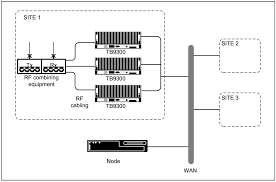DMR Architecture Part 1 – Free Telecom Training Video
Introduction
telcomatraining.com – Digital Mobile Radio (DMR) has become a widely adopted standard in professional communication systems, providing efficient, reliable, and cost-effective voice and data services. As industries such as transportation, public safety, and utilities continue to evolve, DMR plays a crucial role in ensuring seamless connectivity. This article introduces DMR Architecture Part 1 and highlights how a free training video can help telecom professionals understand its key principles.
What is DMR?
DMR, short for Digital Mobile Radio, is an open digital radio standard defined by ETSI (European Telecommunications Standards Institute). It was designed to replace legacy analog radio systems, offering better spectrum efficiency, enhanced audio quality, and secure communications.
The standard supports two-slot Time Division Multiple Access (TDMA) technology within a 12.5 kHz channel, effectively doubling capacity while maintaining bandwidth efficiency. This makes DMR a popular choice across industries where reliable communication is mission-critical.
Core Elements of DMR Architecture
Understanding the architecture of DMR is essential for engineers and technicians. The architecture is typically divided into three tiers, each designed for specific applications:
- Tier I (License-Free):
- Operates in unlicensed frequency bands.
- Intended for personal or small business use.
- Provides basic voice communication without repeaters.
- Tier II (Conventional):
- Requires licensed spectrum use.
- Supports two-slot TDMA for voice and data.
- Commonly used in commercial and industrial sectors.
- Tier III (Trunked):
- Advanced level for large organizations and public safety.
- Provides dynamic channel allocation and scalable capacity.
- Enables group calls, private calls, data messaging, and IP connectivity.
This layered architecture ensures DMR can serve both small-scale users and large enterprise or government networks effectively.
Key Features of DMR Architecture
- Two-Slot TDMA Technology: Delivers spectrum efficiency by doubling channel capacity.
- Interoperability: Since DMR is an open standard, multiple vendors can provide compatible equipment.
- Scalability: From a small factory to nationwide communication systems, DMR adapts to user needs.
- Enhanced Voice Quality: Digital encoding reduces background noise and improves clarity.
- Data Services: Supports text messaging, GPS location tracking, and telemetry alongside voice.
These features make DMR a strong foundation for digital communication in modern telecom environments.
Benefits of Learning Through Free Training Video
Studying DMR through structured training ensures a solid understanding of how the technology functions. A free telecom training video on DMR Architecture Part 1 offers several benefits:
- Visual Explanation: Diagrams and animations simplify complex concepts like TDMA channeling and call flow.
- Practical Insights: Helps learners connect theoretical knowledge with real-world use cases.
- Flexible Learning: Accessible anytime, allowing professionals to study at their own pace.
- Career Advancement: Understanding DMR is valuable for telecom engineers, radio technicians, and network planners.
Applications of DMR in Telecom and Industry
DMR has proven its effectiveness in various industries:
- Public Safety: Ensures reliable, secure communication for police, fire, and emergency medical services.
- Transportation: Used in aviation, railways, and logistics to coordinate operations.
- Utilities: Power plants and water services rely on DMR for maintenance and monitoring.
- Corporate Enterprises: Manufacturing plants and large campuses benefit from efficient group communications.
The versatility of DMR architecture highlights its importance in modern telecom networks.
Conclusion
DMR is more than just a digital replacement for analog radios—it is a robust, scalable, and future-ready communication standard. By understanding DMR Architecture Part 1, learners can grasp the fundamental building blocks of this system. The free training video provides an excellent opportunity for telecom professionals and students to explore DMR in detail, strengthening both technical expertise and career prospects.







